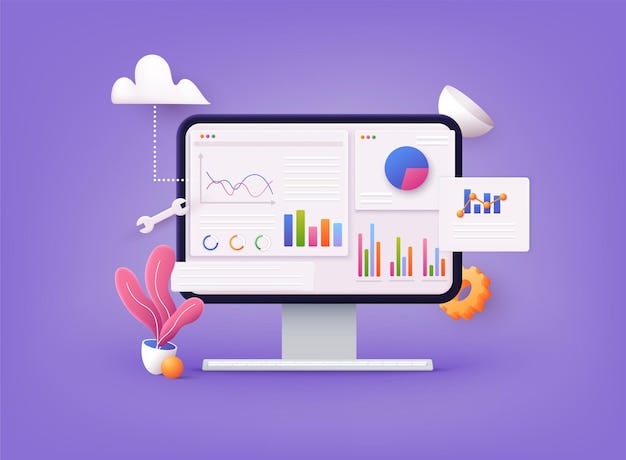25 Tips and Tricks to Design the Perfect Dashboard (Without Losing Your Mind)

Hey there, fellow dashboard designer! If you’re like me, you know that designing a dashboard can be a real pain in the pie chart. But fear not, because I’ve got 25 tips and tricks to help you create the perfect dashboard that will knock the socks off your users (not literally, of course).
- Start with a clear goal: Don’t just throw a bunch of data on the screen and hope for the best. Figure out what you’re trying to achieve and what your users need to know.
- Keep it simple: If you’ve got more colors than a unicorn’s mane and more fonts than a library, it’s time to simplify.
- Use the right chart types: Just like you wouldn’t use a screwdriver to hammer a nail, you shouldn’t use a pie chart to show trends over time.
- Avoid clutter: A cluttered dashboard is like a messy room. It’s hard to find what you’re looking for and it makes you want to leave.
- Use consistent formatting: Consistency is key. Make sure everything looks the same so your users don’t feel like they’re playing “Where’s Waldo?”
- Keep it balanced: You don’t want your dashboard to be lopsided like a wobbly table. Use balance to help your users focus on the most important information.
- Use contrast: Make important data stand out like a flamingo in a flock of pigeons.
- Use appropriate color schemes: Don’t use neon green just because it’s your favorite color. Use colors that make sense for your data and your audience.
- Use clear labels: Make sure your users know what they’re looking at. You don’t want them to be scratching their heads like a confused kitten.
- Provide context: Data without context is like a fish out of water. Make sure your users understand what they’re looking at.
- Use interactive elements: Let your users play around with the data like a kid in a ball pit.
- Use appropriate data granularity: Don’t give your users more data than they need. It’s like giving a goldfish a five-course meal.
- Use a consistent layout: Keep your dashboard organized like a tidy closet.
- Provide clear titles: Use titles that make sense and aren’t as long as a giraffe’s neck.
- Prioritize information: Put the most important information front and center like a spotlight on Broadway.
- Provide data at the appropriate frequency: Don’t bombard your users with data every hour like a helicopter parent.
- Use appropriate data visualization techniques: Use techniques that make sense for your data, like a coat that fits just right.
- Avoid 3D charts: 3D charts are like putting a mustache on the Mona Lisa. It just doesn’t make sense.
- Avoid too much animation: Too much animation is like a clown in a boardroom. It’s distracting and doesn’t belong.
- Use appropriate chart scales: Don’t stretch the data like a pair of skinny jeans. Use appropriate scales to make the data easy to read.
- Use a responsive design: Make sure your dashboard works on all devices like a Swiss Army Knife.
- Provide clear instructions: Make sure your users know how to use the dashboard like a recipe for baking a cake.
- Test your dashboard with users: Test your dashboard with real people to make sure it works like a charm.
- Continuously iterate and improve: Don’t just create your dashboard and forget about it. Keep making improvements like a chef perfecting a recipe.
- Provide context for changes in the data: Don’t leave your users guessing why

In conclusion, designing a dashboard can be a daunting task, but it doesn’t have to be. By following these 25 tips and tricks, you can create a dashboard that is not only visually appealing but also provides valuable insights to your users. Remember to keep it simple, use the appropriate chart types and color schemes, and provide context for your data. With a little bit of humor and a lot of creativity, you can create a dashboard that your users will love. Don’t forget to continuously iterate and improve your dashboard as your user’s needs change. With these tips, you can design the perfect dashboard that will make you the envy of your peers. Happy designing!
